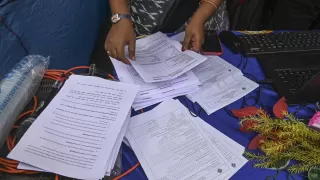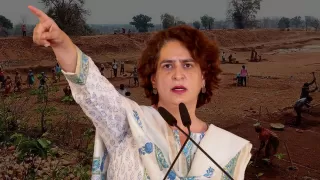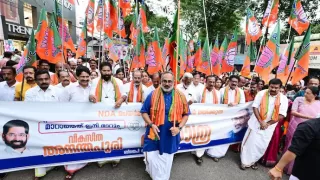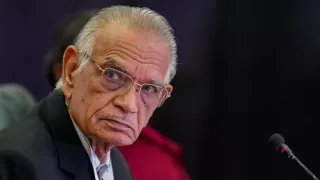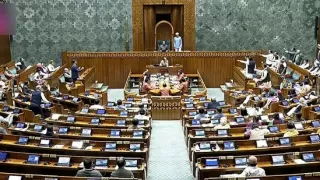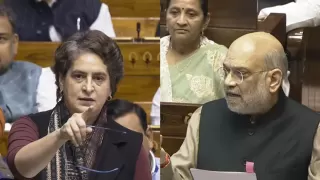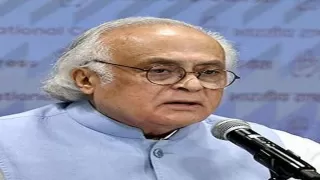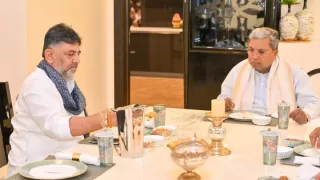The NDA has finalized its seat-sharing arrangement for the Bihar assembly elections after rounds of talks in Delhi and Patna. Under the deal, BJP and JD(U) will each contest 101 seats, Lok Janshakti Party (Ram Vilas) will contest 29 seats, and two smaller allies — Hindustani Awam Morcha and Rashtriya Lok Morcha — will contest six seats each. Party leaders described the distribution as reached in a cordial atmosphere and welcomed by workers across the alliance.
Alliance architects framed the settlement as a demonstration of unity and electoral discipline, while also accommodating regional allies and emerging leaders. The formula will now feed into candidate selection, campaign planning and ground mobilisation ahead of polling.
Final Numbers and How They Were Decided
The final split leaves BJP and JD(U) on equal footing with 101 seats apiece, LJP (Ram Vilas) with 29 seats, and HAM and RLM with six seats each. Negotiations balanced winnability calculations, caste and community equations, incumbent performance, and local ground strength to arrive at the final map.
Senior party functionaries led the talks—state and national coordinators reviewed vote-share data and constituency-by-constituency prospects before locking in the distribution. Several seat swaps and concessions reportedly helped bridge competing claims, with some sitting legislators yielding tickets to keep the alliance intact.
Why Parity Between BJP and JD(U) Matters
Giving BJP and JD(U) the same number of seats is notable: it signals an explicit attempt to show internal harmony and avoid public jockeying over dominance. Historically, JD(U) often contested more seats; the present parity is being read as a deliberate political message of equal partnership and coordinated strategy.
The equal split reshapes local-level calculations: district leaders must rework seat-monitoring plans, campaign rosters, and resource allocation to reflect an even contest map between the two principal allies.
Chirag Paswan: The Deal’s Big Beneficiary
Chirag Paswan’s LJP(R) emerged as a significant beneficiary, securing 29 seats after initial demands that were reportedly higher. Parties appear to have conceded some sitting seats to accommodate the LJP’s expanded presence, boosting Paswan’s leverage within the NDA and raising the party’s importance in closely fought constituencies.
The LJP’s improved seat share changes coalition arithmetic in several districts where Dalit and OBC vote blocs matter—places where Paswan’s party may now tip outcomes in favour of the NDA or force tougher contests with rivals.
Allocations for Smaller Allies and Their Strategic Role
Both HAM and RLM accepted six-seat allocations. Although modest in number, these slots provide local footholds for mobilisation and the ability to influence tight races. Party leaders publicly endorsed the pact and signalled disciplined campaigning within the NDA fold.
Smaller partners are expected to focus on constituency-level campaigning and community outreach, offering the NDA organisational depth in micro-contests where national parties might be less effective.
Negotiation Dynamics and Concessions
The final formula arose from multiple rounds of bargaining involving state leaders and central coordinators. Reports indicate some concessions—such as BJP ceding certain sitting seats—were instrumental in bringing smaller partners on board. The process prioritized reducing friction, preserving coalition integrity, and maximising collective winnability.
Leaders emphasised that the distribution was finalised in a “cordial atmosphere,” signalling to voters and cadres that the NDA intends to present a united front during the campaign period.
Political Calculus: What Each Party Gains
BJP gains a political narrative of shared leadership while keeping a strong organisational presence across Bihar. JD(U) secures parity that preserves its central role in state politics without public conflict. LJP strengthens its bargaining position and local relevance with 29 seats, and smaller allies retain targeted influence in key districts.
For the NDA as a whole, the distribution aims to convert alliance arithmetic into seats by aligning local strengths with the broader campaign message and targeting marginal constituencies where combined vote transfers can deliver victories.
Immediate Next Steps: Candidates, Campaigns and Groundwork
With seat allocation complete, parties will finalise candidate lists, announce nominees, and begin coordinated campaigning. Local committees will meet to confirm ticket allocations, prepare outreach plans, and synchronise messaging across constituencies.
Organisational deployment—booth-level planning, volunteer mobilisation, and resource movement—will now accelerate as the alliance shifts from negotiation to execution ahead of the election schedule.
Potential Risks and Fault Lines
Despite the public display of unity, local resentment over seat cuts or denied tickets can surface during candidate selection. Managing expectations of aspirants and ensuring smooth transfers of sitting MLAs to alternate seats will be crucial to avoid defections and last-minute friction.
Analysts will watch whether the parity arrangement holds through ticket distribution and whether LJP’s expanded footprint translates into actual vote gains or creates friction with established local cadres.
Implications for Opposition and Wider Electoral Landscape
The Anand-style seat map forces opposition parties to recalibrate their own seat-sharing talks and candidate strategies. The balance between national narratives and local alliances will shape the broader contest, with regional players and third-front entries also recalibrating their equations in response.
How effectively the NDA translates this arithmetic into coordinated ground action will determine whether the alliance converts its seat-sharing pact into an electoral majority.
Summary
The NDA’s seat-sharing pact—marked by equal stature for BJP and JD(U), an enhanced role for Chirag Paswan, and allocations for smaller allies—aims to project unity and maximise winnability. The coming days will test the agreement as parties finalise candidates and intensify grassroots campaigning across Bihar.
Also Read: Trump’s China Tariffs Wipe $770B from Tech Giants’ Value






